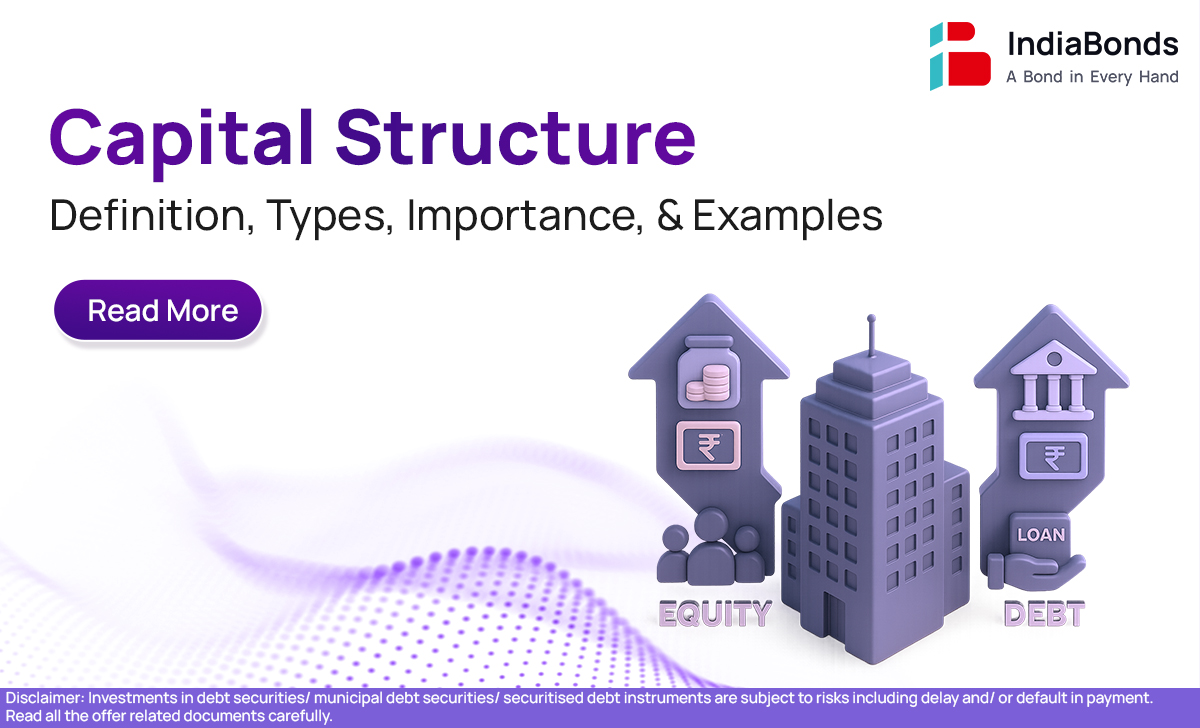Capital Structure Definition, Types, Importance, and Examples

Riya owned a small textile unit in Surat. She stitched elegant cotton kurtas, yet money always felt scarce. One afternoon a banker named Prakash visited and asked how she would fund a big export order. She could borrow, bring in a partner, or use her profits. Prakash explained that the mix she chose would shape the future of her business. That chat sent Riya on a simple journey to understand the money map used by even the biggest Indian firms.
Introduction
In plain words, a company can use owners money called equity or borrowed money called debt to run and grow. The balance of the two decides risk, control, and profit sharing. When people ask for the capital structure definition, they want a clear picture of that balance across shares and loans.
What is Capital Structure
Think of a thali. Rice and dal are essential, but the amounts change by taste. Businesses mix equity and debt the same way. A neat capital structure definition is this. It is the way a firm arranges long term funds between equity and debt so that work continues smoothly and goals are met.
Understanding the Trade Offs
Debt is cheaper but has compulsory interest. Equity is flexible but dilutes control. A working capital structure definition helps owners compare these trade offs and pick a mix that keeps lenders calm and shareholders hopeful. Riya saw that steady orders could support some bank debt, while unknown seasons asked for fresh equity.
Debt to Equity Across Indian Industries
Banks such as HDFC Bank naturally use more deposits and borrowings, so debt is high. Power firms like NTPC also carry heavy loans because plants are costly and cash flows are predictable. On the other hand, Infosys and TCS usually keep debt low and hold cash since services need people more than machines. An e commerce player like Zomato may raise equity often to fund growth before profits settle.
Comparing Capital Choices
Tata Steel can justify debt for long lasting assets. Maruti Suzuki leans more on equity because car demand swings. A city builder like DLF borrows with caution as projects are slow. These contrasts show how one clean capital structure definition can guide very different decisions and still stay simple for owners and investors.
Conservative Capital Structures
A conservative capital structure keeps borrowings modest and interest easy to pay. Companies with stable profits and strong cash balances prefer this. Infosys is a well known Indian example. A small unit like Riyas may also use a conservative capital structure while markets are uncertain. This style lowers stress, protects credit scores, and guards against shocks. Mature consumer brands often pick a conservative capital structure because steady sales already fund growth. Riya finally chose a conservative capital structure for two years, planning to add safe term loans once exports became regular.
Higher Debt Capital Structures
Sometimes firms go the other way. A toll road company with predictable collections may borrow more since the project earns in a steady line. When returns exceed interest, debt lifts profit for owners, but only if cash flows arrive on time.
FAQ
What are the 4 capital structures
Pure equity, mainly equity with some debt, balanced debt and equity, and mainly debt with a small slice of equity.
What is meant by capital structure
It is the mix of equity and debt a company uses to finance long term needs and growth.
What are the 4 dividend policies
Regular fixed dividend, stable dividend with small rises, residual dividend after project needs, and no dividend during expansion phases.
What is the capital structure of a share company
It is the specific split between shareholder funds and borrowings shown on the balance sheet, chosen to suit risk, returns, and industry needs.
Disclaimer : Investments in debt securities/ municipal debt securities/ securitised debt instruments are subject to risks including delay and/ or default in payment. Read all the offer related documents carefully.
































